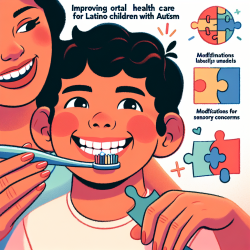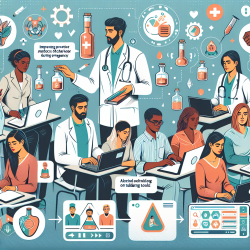Introduction
As practitioners in the field of speech-language pathology, we are always on the lookout for new insights and research that can enhance our practice and improve outcomes for children. A recent study titled "The effects of exposure to solar radiation on human health" offers valuable insights that can be applied to our work, especially in the context of online therapy services like those provided by TinyEYE.
Understanding the Research
The study highlights the dual nature of solar radiation, which can both harm and benefit human health. It emphasizes the importance of the Montreal Protocol in preventing significant increases in UV radiation, which has implications for skin cancer and other health outcomes. Notably, the study also explores how UV exposure can modulate the immune system, offering both protective and detrimental effects.
Implications for Child Health
For children, balanced sun exposure is crucial. The research underscores that while excessive UV exposure can lead to skin cancers and eye damage, moderate exposure is essential for vitamin D synthesis, which is vital for bone health and immune function. As practitioners, understanding these nuances helps us guide families in making informed decisions about outdoor activities and sun protection for their children.
Data-Driven Strategies for Practitioners
1. Educate Families: Use data from the study to educate families about the importance of balanced sun exposure. Encourage outdoor play while emphasizing the use of sunscreen and protective clothing to minimize harmful effects.
2. Incorporate Sunlight in Therapy: For online therapy sessions, suggest activities that can be done outdoors when possible. This not only enhances vitamin D synthesis but also provides a change of environment that can be beneficial for children’s mental health.
3. Monitor Vitamin D Levels: Encourage regular check-ups to monitor vitamin D levels, especially in children who may have limited sun exposure due to geographical or lifestyle factors.
Encouraging Further Research
The study opens avenues for further research into how controlled UV exposure can be used therapeutically. Practitioners are encouraged to stay informed about ongoing research and consider participating in studies that explore the health benefits of sunlight in pediatric populations.
Conclusion
By integrating the findings from this research into our practice, we can make data-driven decisions that enhance the health and well-being of the children we serve. As we continue to provide online therapy services, let’s leverage these insights to create holistic and effective therapeutic environments.
To read the original research paper, please follow this link: The effects of exposure to solar radiation on human health.










